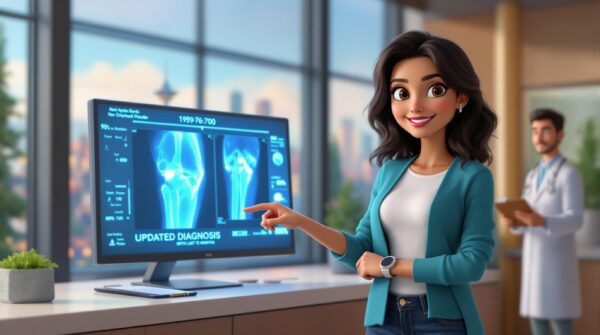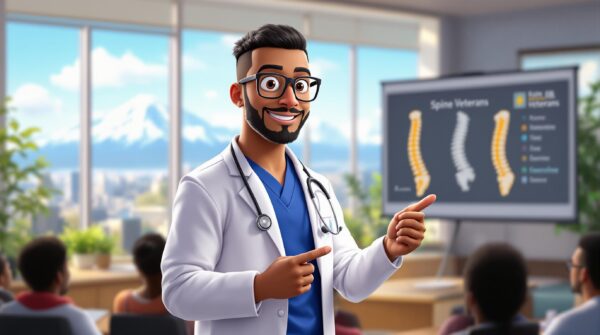The Ultimate Guide: How to File a VA Claim for Secondary Service Connection in 2025
Here’s what nobody tells you about VA disability benefits.
Your service-connected knee injury doesn’t just hurt your knee.
It changes how you walk. Which changes how your back carries weight. This could leads to chronic pain that keeps you up at night. Which leads to sleep apnea. Which leads to depression.
And that’s just the beginning.
The VA calls this cascade of conditions “secondary service connection.” As a veteran, your disability benefits extend beyond the initial injury. Every veteran with a service-connected disability should understand how secondary conditions multiply their disability compensation. Too many veterans miss this opportunity, leaving earned benefits unclaimed.
Not anymore.
What is a Secondary Service Connection VA Claim?
Think of secondary service connection like a falling domino effect.
Your primary service-connected disability is the first domino. Everything it knocks over counts too.
A secondary VA claim recognizes that when the VA already acknowledges one service-connected condition, any additional disability caused or aggravated by that original condition also qualifies for compensation.
The domino effect is real. The benefits are real. The recognition matters.
Understanding Secondary Conditions vs. Primary Service-Connected Disabilities
Primary disabilities are direct impacts from your military service. Secondary conditions are the ripple effects.
Primary: The knee injury from that training exercise in 2015. Secondary: The back pain that developed because you changed how you walk.
Both matter. They count. Both deserve recognition.
Every veteran with an existing service-connected disability has potential secondary conditions. The question isn’t whether you have them. It’s whether you’ve claimed the disability compensation you’ve earned. Your disability benefits shouldn’t stop at the primary condition.
How Secondary VA Claims Differ from Direct Service Connection
Filing a secondary VA claim shifts the burden of proof.
For primary service connection, you need to prove three things:
- The condition exists today
- Something happened during service
- Those two are connected
For secondary service connection, you prove just two:
- The new condition exists today
- Your existing service-connected disability caused or aggravated it
That missing requirement? That’s why secondary claims can be easier to win.
Common Examples of Secondary Conditions Veterans Can Claim
Secondary conditions follow predictable patterns.
PTSD often leads to sleep apnea, depression, and gastroesophageal reflux disease. Knee injuries create hip and back problems through compensation. Diabetes mellitus causes peripheral neuropathy, retinopathy, and cardiovascular disease.
Tinnitus triggers migraines and anxiety disorders.
These aren’t random connections. They’re documented medical pathways the VA recognizes.
When veterans can file a va claim for secondary conditions effectively, they often discover multiple benefits they’d previously missed. For example, a service-connected herniated disc or spinal condition leads to back problems, chronic pain and limitations that qualify as secondary conditions.
How to File a Secondary VA Disability Claim Online
Filing a secondary VA claim online follows the same path as any VA claim, with a key difference in your approach.
When veterans file for VA disability, this secondary pathway often proves more straightforward than the original claim. The process builds on your existing service connection rather than establishing one from scratch.
The key is knowing that a non-service connected secondary disability condition can become service-connected through proper filing and evidence.
Step-by-Step Guide to Completing VA Form 21-526EZ
Start at VA.gov and sign in with your Login.gov or ID.me account.
Navigate to the disability claim section and create a new claim. When asked about the condition you’re claiming, you must clearly identify it as secondary.
Use this exact language: “Sleep apnea secondary to service-connected PTSD” or “Back pain secondary to service-connected knee injury.”
The word “secondary” is your key to the right processing queue. As a veteran filing for disability benefits, this terminology matters for your claim’s success.
Required Documentation and Medical Evidence for Your Claim
Every secondary claim needs:
- A current diagnosis of the secondary condition
- Evidence of your primary service-connected condition
- Nexus evidence linking them together
That third item is crucial. The secondary disability condition is medical diagnosed, but without proper medical nexus evidence linking it to your primary condition, your claim stalls.
This evidence must show the service-connected condition causes or aggravates the new condition. Without this explicit connection, even a properly diagnosed secondary disability may not be deemed service-connected.
Tips for Using the VA.gov Portal Effectively
The portal autosaves your progress. Use it.
Upload documents larger than 25MB through QuickSubmit. Name your files descriptively: “Nexus_Letter_Sleep_Apnea_Dr_Smith_2025.pdf” Avoid duplicates from existing VA records.
The system works. When you work with it.
How to Prove Secondary Service Connection for VA Benefits
Secondary service connection requires proof of causation or aggravation.
Causation means your primary disability directly created the secondary condition. Aggravation means your primary disability made a pre-existing condition worse.
Both paths lead to service connection.
Understanding the Nexus Requirement for Secondary Claims
The nexus is your bridge between conditions.
The VA requires a nexus statement meeting the “at least as likely as not” standard – a 50% or greater probability that the connection exists.
Medical opinions using phrases like “possibly related” fail this test. Expert statements confirming “at least as likely” pass it, establishing the link between your primary service-connected condition and your secondary disability.
Words matter. Standards matter. Get both right.
Obtaining a Strong Nexus Letter from Medical Professionals
Your nexus letter needs:
- The provider’s qualifications relevant to your conditions
- A statement reviewing your medical records
- The “at least as likely as not” language
- Detailed medical rationale supporting the opinion
Most providers or private physicians don’t know VA’s legal standard. Educate them. A high-quality nexus letter from a private healthcare professional often outweighs an inadequate C&P exam.
The best nexus letter from a private physician or specialist explicitly confirms the secondary condition is “at least as likely as not” caused by your primary service-connected disability.
Using Medical Records to Support Your Secondary VA Claim
Your medical records tell a story. Make sure it’s the right one.
Organize chronologically. Highlight key findings related to your secondary condition. Include relevant medical records from private providers that connect the dots between your primary and secondary conditions.
The VA reviews thousands of pages daily. Make your evidence impossible to miss. When a veteran has a service-connected disability and files for a related condition, these organized records create the narrative needed for approval.
Common Challenges When Filing a Secondary VA Claim
Most veterans face similar obstacles. Knowing them helps you avoid them.
Addressing VA Denials for Secondary Service-Connected Conditions
Denials often cite insufficient evidence – particularly weak nexus evidence.
87% of initially denied back claims from veterans contain sufficient evidence for medical service connection. As a veteran, the problem isn’t evidence quantity. It’s translation.
The VA speaks in regulatory language. Veterans speak in human experience. The gap between these two worlds can cost veterans their disability benefits.
Overcoming Gaps in Medical Evidence
Evidence gaps happen. Especially for secondary conditions that develop gradually.
Use buddy statements to fill temporal gaps. Leverage lay evidence to supplement limited medical records. Focus on documenting progression, not perfection.
When to Seek Help from a VA Claim Expert
Secondary claims succeed at 62% with proper nexus evidence. They fail at 73% without it.
The difference justifies expertise. As a veteran seeking disability compensation, if your secondary claim gets denied or you’re struggling with evidence collection, speak with a va claim expert who understands both the medical and legal requirements for securing your disability benefits.
Whether you need help through VA Claims Insider Elite or other professional resources, expert guidance can dramatically improve your success rate. An elite membership program or professional advocate can help navigate the complexities of proving the secondary condition is “at least as likely as not” connected to your service-connected condition.
Secondary VA Disability Ratings and Compensation Explained
Secondary conditions receive their own disability evaluation, regardless of primary condition rating.
How the VA Rates Secondary Conditions
The VA rates secondary conditions using the same criteria as primary disabilities.
A secondary condition rated at 30% adds to your total disability rating, affecting your compensation regardless of how it was caused.
Understanding Combined Disability Ratings
VA math isn’t simple math. 50% plus 30% doesn’t equal 80%.
The VA’s combined ratings formula takes each additional condition as a percentage of the veteran’s remaining unaffected abilities.
Understanding this formula matters for maximizing your benefits when you have multiple conditions that can be claimed as a secondary condition. Whether each disability condition is medical diagnosed with its own rating, the combined effect multiplies compensation.
Potential Compensation Benefits for Approved Secondary Claims
Successful secondary claims can significantly increase your monthly compensation.
A veteran rated 50% for primary disabilities who successfully claims a 30% secondary condition might increase to 65% total disability.
That’s more than arithmetic. It’s about full recognition of your service-connected health challenges. Every veteran deserves disability compensation that reflects their complete disability picture.
Timeline and Process for Secondary VA Claims in 2025
VA secondary claims average 130-140 days for completion.
Average Processing Times for Secondary Service-Connected Conditions
Times vary based on:
- Evidence completeness (Fully Developed Claims process faster)
- C&P exam requirements
- Regional office workload
Expect 4-6 months for a straightforward secondary claim.
What to Expect During the VA Claim Process
After filing your secondary va disability claim, the VA:
- Reviews your eligibility and evidence
- Orders a C&P exam if needed
- Evaluates medical evidence for nexus
- Assigns a rating if service-connected
- Notifies you of the decision
Track your claim status through VA.gov or call 1-800-827-1000. As a veteran seeking disability benefits, staying informed about your claim’s progress ensures you can respond promptly to any VA requests.
Options if Your Secondary VA Claim is Denied
Denials aren’t final. You have three paths forward:
- Supplemental Claim: Submit new evidence supporting your case
- Higher-Level Review: Request senior review without new evidence
- Board Appeal: Take your case to the Board of Veterans’ Appeals
Choose based on your specific denial reasons and available evidence.
Conclusion
Secondary service connection isn’t optional compensation. It’s earned recognition of the full impact your military service has on your health and quality of life.
For every veteran dealing with:
- The knee injury that led to arthritis
- The PTSD that caused sleep apnea
- The diabetes that triggered neuropathy
Each connection matters. All deserve recognition. Each qualifies for disability benefits.
As a veteran, don’t let the complexity of the VA claim process prevent you from claiming the disability compensation you’ve earned. With proper documentation, a strong nexus, and strategic filing, your secondary VA claim can secure the benefits you deserve.
The VA claims system wasn’t designed for simplicity, but it can be navigated with the right tools. Download our free guide: The 5 Fatal Flaws that Get Post-9/11 Orthopedic Claims Denied to understand the common pitfalls, explore our articles for deeper insights, or book a consultation to create your personalized claim strategy.
References
- 38 CFR § 3.310 – Disabilities that are proximately due to, or aggravated by, service-connected conditions, accessed April 28, 2025, https://www.law.cornell.edu/cfr/text/38/3.310
- File for disability compensation with VA Form 21-526EZ | Veterans Affairs, accessed April 28, 2025, https://www.va.gov/disability/file-disability-claim-form-21-526ez/
- At Least As Likely As Not: The VA’s Standard of Proof Explained, accessed April 28, 2025, https://vaclaimsinsider.com/at-least-as-likely-as-not-va-standard-of-proof/
- At Least As Likely As Not: VA’s Standard of Proof | CCK Law, accessed April 28, 2025, https://cck-law.com/video/at-least-as-likely-as-not-vas-standard-of-proof/
- Service-Connection by Aggravation — Veterans Benefits …, accessed April 28, 2025, https://www.veteransbenefitskb.com/agg
- 24001030.txt – VA.gov, accessed April 28, 2025, https://www.va.gov/vetapp24/Files1/24001030.txt
ABOUT THE AUTHOR:
Jerome Spearman is a VA accredited claims agent and a legal nurse consultant specializing in orthopedic appeal representation for post 9-11 veterans. He believes that every post 9-11 veteran deserves a strategic advocate who turns VA denial confusion into clarity and earned benefits. Connect with Jerome on LinkedIn or by email at jerome@spearmanappeals.com for regular updates on VA policy changes and claim strategies. EMPOWERMENT FIRST, VETERAN ADVOCACY ALWAYS











